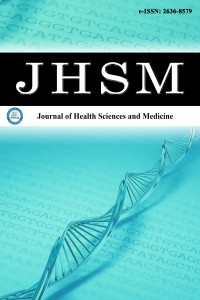1.
Kong KH, Yang SY. Health-related quality of life among chronicstroke survivors attending a rehabilitation clinic. Singapore Med J.2006;47(3):213-218.
2.
Tobin C, Hevey D, Horgan NF, Coen RF, Cunningham CJ.Healthrelated quality of life of stroke survivors attending thevolunteer stroke scheme. Ir J Med Sci. 2008;177(1):43-47.
3.
Ramos-Lima MJM, Brasileiro IC, Lima TL et al. Quality of lifeafter stroke: impact of clinical and sociodemographic factors.Clinics. 2018;73:e418.
4.
Geyh S, Cieza A, Stucki G. Evaluation of the German translation ofthe Stroke Impact Scale using Rasch analysis. Clin Neuropsychol.2009;23(6):978-995.
5.
Nutbeam D. Health promotion glossary. Health PromotInt.1998;13(4):349-364.
6.
Toobert DJ, Hampson SE, Glasgow RE. The summary of diabetesself-care activities measure: results from 7 studies and a revisedscale. Diabetes Care. 2000;23(7):943-950.
7.
Dunn P,Conard S. Improving health literacy in patients withchronic conditions: a call to action. Int J Cardiol. 2018;273:249-251.
8.
Chew LD, Bradley KA, Boyko EJ. Brief questions to identifypatients with inadequate health literacy. Fam Med. 2004;36(8):588-594
9.
Kleindorfer DO, Towfighi A, Chaturvedi S, et al. Guideline for theprevention of stroke in patients with stroke and transient ischemicattack: a guideline from the American Heart Association/American Stroke Association. Stroke. 2021;52(7):364-467.
10.
Barakou I, Hackett KL, Finch T, et al. Self-regulation of effort fora better health-related quality of life: a multidimensional activitypacing model for chronic pain and fatigue management. AnnMed. 2023;55(2):2270688.
11.
Okyay P, Abacıgil F. Türkiye sağlık okuryazarlığı ölçeklerigüvenilirlik ve geçerlilik çalışması. Mayıs 2016, Sağlık BakanlığıYayın No: 1025.
12.
Sawner K, Lavigne J. Brunnstrom’s Movement Therapy inHemiplegia: A Neurophysiological Approach. 2nd ed. Philadelphia:Lippincott. 1992.
13.
Küçükdevecı AA, McKenna S, Kutlay S, Gürsel Y, Whalley D,Arasıl T. The development and psychometric assessment of theTurkish version of the Nottingham Health Profile. Int J RehabilRes. 2000;23(1):31-38.
14.
Hjermstad MJ, Fayers PM, Haugen DF, Caraceni A, Hanks GW,Loge JH, et al. European Palliative Care Research Collaborative(EPCRC). Studies comparing Numerical Rating Scales, VerbalRating Scales, and Visual Analogue Scales for assessment of painintensity in adults: a systematic literature review. J Pain SymptomManage. 2011;41(6):1073-1093.
15.
Li M, Xu G, Xie J, Chen C. A review: motor rehabilitation afterstroke with control based on human intent. Proc Inst Mech Eng H.2018;232(4):344-360.
16.
Feigin VL, Stark BA, Johnson CO, Roth GA, Bisignano C, AbadyGG, et al. Global, regional, and national burden of stroke and ıtsrisk factors, 1990-2019: a systematic analysis for the global burdenof disease study 2019. Lancet Neurol. 2021;20(10):795-820.
17.
Meschia JF, Bushnell C, Boden-Albala B, et al. Guidelines forthe primary prevention of stroke: a statement for healthcareprofessionals from the American heart association /Americanstroke association. Stroke. 2014;45(12):3754-3832.
18.
Öhgren B, Weinehall L, Stegmayr B, Boman K, Hallmans G,Wall S. What else adds to hypertension in predicting stroke? anincident case-referent study. J Intern Med. 2000;248(6):475-482.
19.
Maalouf E, Hallit S, Salameh P, Hosseini H. Eating behaviors,lifestyle, and ischemic stroke: a Lebanese case-control study. Int JEnvironmental Res Pub Health. 2023;20(2):1487.
20.
Honjo K, Iso H, Nakaya T, et al. Impact of neighborhoodsocioeconomic conditions on the risk of stroke in Japan. J.Epidemiol. 2015;25(3):254-260.
21.
Kumar A, Prasad M, Kathuria P, et al. Low socioeconomic status isan independent risk factor for ischemic stroke: a case-control studyin north Indian population. Neuroepidemiol. 2015;44(3):138-143.
22.
Büyükşireci D, Demirsoy ÜN. Evaluation of the health literacylevel of female fibromyalgia patients and relationship betweenhealth literacy level and disease activity. Arch Rheumatol.2021;36(2):274-279.
23.
Feigin VL, Krishnamurthi RV, Parmar P, et al. Update on theglobal burden of ıschemic and hemorrhagic stroke in 1990-2013:the GBD 2013 study. Neuroepidemiol. 2015;45(3):161-176.
24.
O'Donnell MJ, Xavier D, Liu L, et al. Risk factors for ischaemicand intracerebral haemorrhagic stroke in 22 countries(the INTERSTROKE study): a case-control study. Lancet.2010;376(9735):112-123.
25.
Institute of Medicine (US) Committee on Health Literacy. HealthLiteracy: A Prescription to End Confusion. Nielsen-BohlmanL, Panzer AM, Kindig DA, editors. Washington (DC): NationalAcademies Press (US); 2004. PMID: 25009856.
26.
Šedová L, Bártlová S, Hudácková A, Havierniková L, Dolák F,Ostrý S. Health literacy and modifiable risk factors of a stroke.KONTAKT-J Nurs Soc Sci Health Illness. 2021;23(3):149-156.
27.
Aran N, Tregobov N, Kooij K, Harris D Goel G, Poureslami I.Health literacy and health outcomes in stroke management: asystematic review and evaluation of available measures. J HumaSoc Sci. 2022;5(2):172-191.
28.
Pien LC, Cheng WJ, Chang WP, Chen SR, Chou KR, Wang CH.Relationships between stroke prevalence, health literacy, and oralhealth-related quality of life in middle-aged and older adults: anational survey study. BMC Geriatrics. 2023;23(1):1-8.
29.
Jeong J, Cha J. Factors affecting health behavior of patientswith stroke: focusing on health literacy of patients and familycaregivers. Korean J Adult Nurs. 2020;32(6):632-641.
30.
Sanders K, Schnepel L, Smotherman C, Livingood W, DodaniS, Antonios N, et al. Assessing the impact of health literacy oneducation retention of stroke patients. Preventing Chron Dis.2014;11(11):130259.
31.
Baumann M, Le Bihan E, Chau K, Chau N. Associations betweenquality of life and socioeconomic factors, functional impairmentsand dissatisfaction with received information and home-careservices among survivors living at home two years after strokeonset. BMC Neurol. 2014;14:1-12.
32.
American Heart Association. (2003). Get with Guidelines.https://www.heart.org/en/professional/quality-improvement/get-with-the-guidelines (Access Date: 25.09.2023)
33.
Flink M, Lindblom S, von Koch L, Carlsson AC, Ytterberg C.Health literacy is associated with less depression symptoms,higher perceived recovery, higher perceived participation, andwalking ability one year after stroke-a cross-sectional study. TopicsStroke Rehab. 2023;30(8):865-871.
34.
Çiftçi N, Yıldız M, Yıldırım Ö. The effect of health literacy andhealth empowerment on quality of life in the elderly. Psychogeriatr.2023;23(4):609-620.
35.
Faul F, Erdfelder E, Lang F et al. G*Power 3: a flexible statisticalpower analysis program for the social, behavioral, and biomedicalsciences. Behav Res Meth. 2007;39(2):175-191.
36.
Huang Y, Chen T, Lin T. Evaluating the European health literacysurvey questionnaire in patients with stroke: a latent trait analysisusing Rasch modeling. Pat-Pat-Cent Outc Res. 2018;11(1):83-96.

